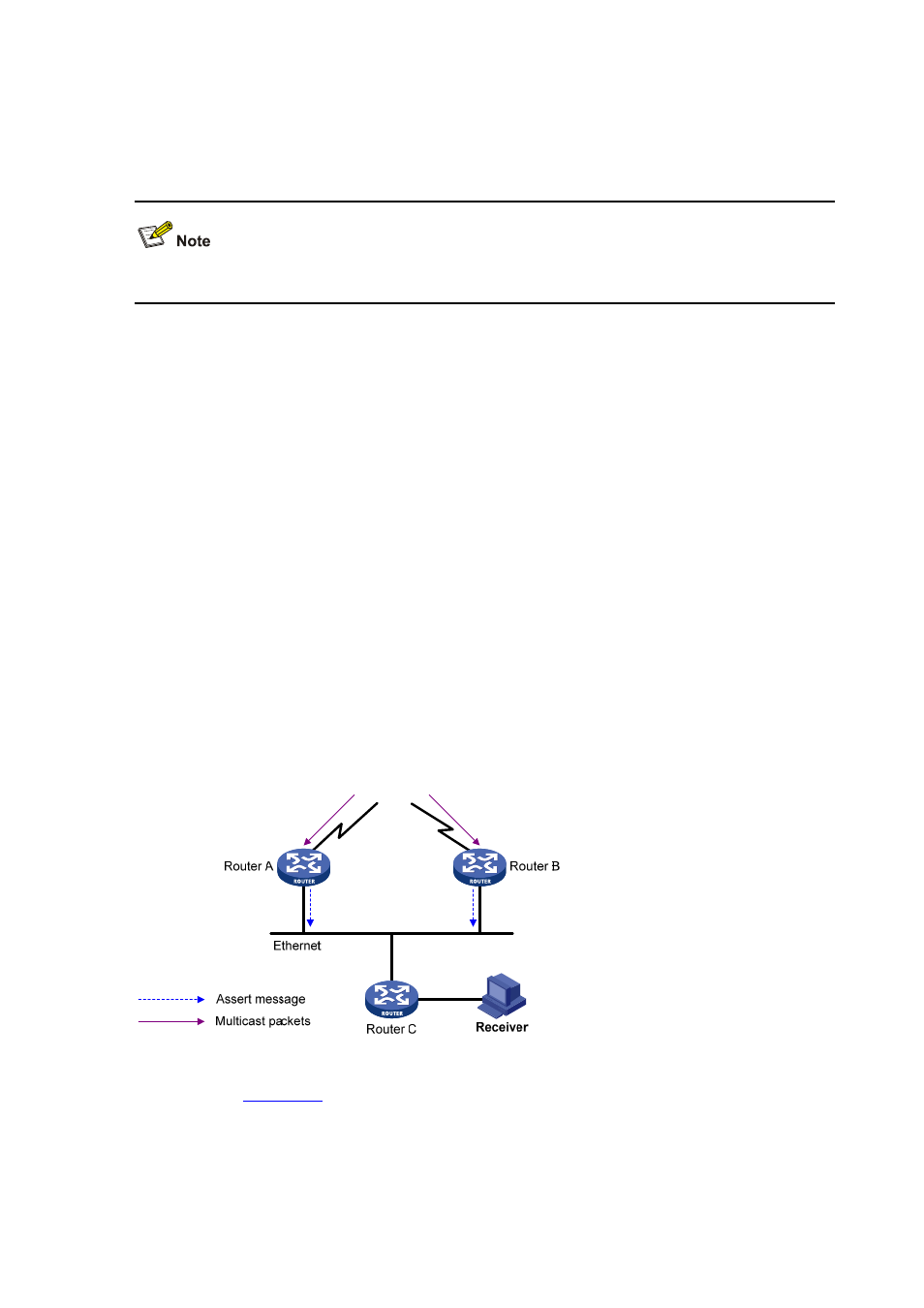Graft, Assert – H3C Technologies H3C S7500E Series Switches User Manual
Page 141

6-4
The “flood and prune” process takes place periodically. A pruned state timeout mechanism is
provided. A pruned branch restarts multicast forwarding when the pruned state times out and
then is pruned again when it no longer has any multicast receiver.
Pruning has a similar implementation in PIM-SM.
Graft
When a host attached to a pruned node joins a multicast group, to reduce the join latency,
PIM-DM uses a graft mechanism to resume data forwarding to that branch. The process is as
follows:
1) The node that needs to receive multicast data sends a graft message toward its upstream
node, as a request to join the SPT again.
2) Upon receiving this graft message, the upstream node puts the interface on which the graft
was received into the forwarding state and responds with a graft-ack message to the graft
sender.
3) If the node that sent a graft message does not receive a graft-ack message from its
upstream node, it will keep sending graft messages at a configurable interval until it
receives an acknowledgment from its upstream node.
Assert
The assert mechanism is used to shutoff duplicate multicast flows onto the same multi-access
network, where more than one multicast router exists, by electing a unique multicast forwarder
on the multi-access network.
Figure 6-2 Assert mechanism
As shown in
, after Router A and Router B receive an (S, G) packet from the
upstream node, they both forward the packet to the local subnet. As a result, the downstream
node Router C receives two identical multicast packets, and both Router A and Router B, on
their own local interface, receive a duplicate packet forwarded by the other. Upon detecting this
condition, both routers send an assert message to all PIM routers (224.0.0.13) through the